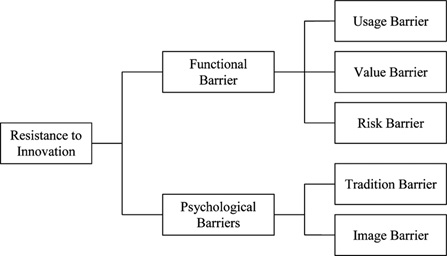Theory Template

Name of Theory
Acronym
XYZ
Alternate name(s)
N/A or as applicable
Main dependent construct(s)/factor(s)
Enlist one or set of outcome/resultant variable, as applicable
Main independent construct(s)/factor(s)
Enlist one or set of trigger/initiating variable, as applicable
Concise description of theory
Give an overview in 2 to 3 lines
Generic context
Explain in brief about the generic context and make use of bulleted points if needed
- First point
- Second point
- Nth point
‘Information Systems’ context
Explain in brief on how this theory is relevant to IS context and make use of bulleted points if needed.
- First point
- Second point
- Nth point
Write a summarized line
.
Diagram/schematic of theory
(enlist your one or two figure as applicable)
- Figure 1: Types of Invocation Resistance (Source: Ram, S. and Sheth, J.N. 1989)
.
Originating author(s)
- Sheth, Jagadish. N; & Stellner, W. H. (1979) – provided the psychology base thought process
- S. Ram (1987) – conceptualized a model of Innovation Resistance
- Ram, S. and Sheth, J.N. (1989) – refined the model explanation from practical perspective
Seminal article(s)
- Sheth, J. N; & Stellner, W. H. (1979). Psychology of Innovation Resistance: The less developed concept (LDC) in diffusion research (No. 622). Urbana-Champaign, IL, USA: College of Commerce and Business Administration, University of Illinois at Urbana-Champaign. Permalink: https://hdl.handle.net/2142/26627
- S. Ram (1987), A Model of Innovation Resistance, in NA - Advances in Consumer Research Volume 14, eds. Melanie Wallendorf and Paul Anderson, Provo, UT: Association for Consumer Research, Pages: 208-212. https://www.acrwebsite.org/volumes/6688/volumes/v14/NA-14
- Ram, S. and Sheth, J.N. (1989), Consumer Resistance to Innovations: The Marketing Problem and its solutions, Journal of Consumer Marketing, Vol. 6 No. 2, pp. 5-14. https://doi.org/10.1108/EUM0000000002542
Originating area
Marketing – Consumer Behaviour
Level of analysis
Individual or Group
Links from this theory to other theories
1 liner with links to other theory. Example: This theory is different from ‘Diffusion of Innovations Theory’, which is also a popular innovation-based theory used in context of IS – Information Systems
Key References Outside IS Research Area
- Heidenreich, S. and Kraemer, T. (2016), Innovations—Doomed to Fail? Journal of Product Innovation Management, Vol 33: Pages 277-297. https://doi.org/10.1111/jpim.12273
- Ju, N., Lee, KH. (2020), Consumer resistance to innovation: smart clothing (Fashion and Textiles), International Journal of Interdisciplinary Research, Volume 7, 21. https://doi.org/10.1186/s40691-020-00210-z
- Mohd Sadiq, Mohd Adil, Justin Paul (2021), An innovation resistance theory perspective on purchase of eco-friendly cosmetics, Journal of Retailing and Consumer Services, Volume 59, 102369, ISSN 0969-6989, https://doi.org/10.1016/j.jretconser.2020.102369
- Dan Huang, Alexandra Coghlan, Xin Jin (2022), A process perspective on consumer innovation resistance to Airbnb: A narrative approach, International Journal of Hospitality Management, Volume 107, 103306, ISSN 0278-4319, https://doi.org/10.1016/j.ijhm.2022.103306
IS articles that use the theory
- Chung, K. C., & Liang, S. W. J. (2020). Understanding factors affecting innovation resistance of mobile payments in Taiwan: An integrative perspective. Mathematics, 8(10), 1841. https://doi.org/10.3390/math8101841
- Kaur, P; Dhir, A; Ray, A; Bala, P.K; and Khalil, A. (2021), Innovation resistance theory perspective on the use of food delivery applications, Journal of Enterprise Information Management, Vol. 34 No. 6, pp. 1746-1768. https://doi.org/10.1108/JEIM-03-2020-0091
- Zhenya Tang, Leida Chen (2022); Understanding seller resistance to digital device recycling platform: An innovation resistance perspective, Electronic Commerce Research and Applications, Volume 51, 101114, ISSN 1567-4223, https://doi.org/10.1016/j.elerap.2021.101114
- Shishan, F., Hmoud, H., Zaidan, H., Qasem, Z. (2022). The Innovation Resistance Theory: The Case of Cryptocurrencies. In: Musleh Al-Sartawi, A.M.A. (eds) Artificial Intelligence for Sustainable Finance and Sustainable Technology. ICGER 2021. Lecture Notes in Networks and Systems, vol 423. Springer, Cham. https://doi.org/10.1007/978-3-030-93464-4_45
- Park, E. H., Werder, K., Cao, L., & Ramesh, B. (2022). Why do Family Members Reject AI in Health Care? Competing Effects of Emotions. Journal of Management Information Systems, 39(3), 765–792. https://doi.org/10.1080/07421222.2022.2096550
External links
- https://solvinnov.com/resistance-of-innovation/ - a website maintained by Dr. Adam Tacy, dealing with various topics of innovation and has a dedicated section on IRT
- An exploratory study of mobile banking services resistance, July 2012, International Journal of Mobile Communications 10(4):366-385, https://doi/10.1504/IJMC.2012.048136 -- this doesn’t directly use the IRT theory but makes a good contextual reading on innovation resistance
- NADINE HIETSCHOLD, RONNY REINHARDT, SEBASTIAN GURTNER (2020), Who put the “NO” in Innovation? Innovation resistance leaders’ behaviour and self-identities, Technological Forecasting and Social Change, Volume 158, 120177, ISSN 0040-1625, https://doi.org/10.1016/j.techfore.2020.120177 -- this doesn’t directly use the IRT theory but makes a good contextual reading on innovation resistance
- https://hbsp.harvard.edu/product/W18034-PDF-ENG – Apple Watch: Managing Innovation Resistance, a teaching business case study by Tania Bucic, Gaganpreet Singh
- https://www.diva-portal.org/smash/get/diva2:865523/FULLTEXT01.pdf -- Attitudes of French consumers towards breakthrough innovation – A qualitative study about Google Glass, a 2015 Masters-degree-thesis by student authors Allison Le Garrec and Jérémy Torregrosa, under their Supervisor Peter Hultén, of college Umeå School of Business and Economics
- https://www.google.co.in/books/edition/Information_Systems_Innovation_and_Diffu/B2K9W5sqvKEC?hl=en&gbpv=0&kptab=overview – Google Books – Larsen, T. J. (1998). Innovation: A Framework for Research and Practice. Information systems innovation and diffusion: Issues and directions, 411.
Contributor(s)
Name - affiliated institute or organization
Date last updated
dd-MMM-yyyy
Please feel free to make modifications to this site. In order to do so, you must register.
